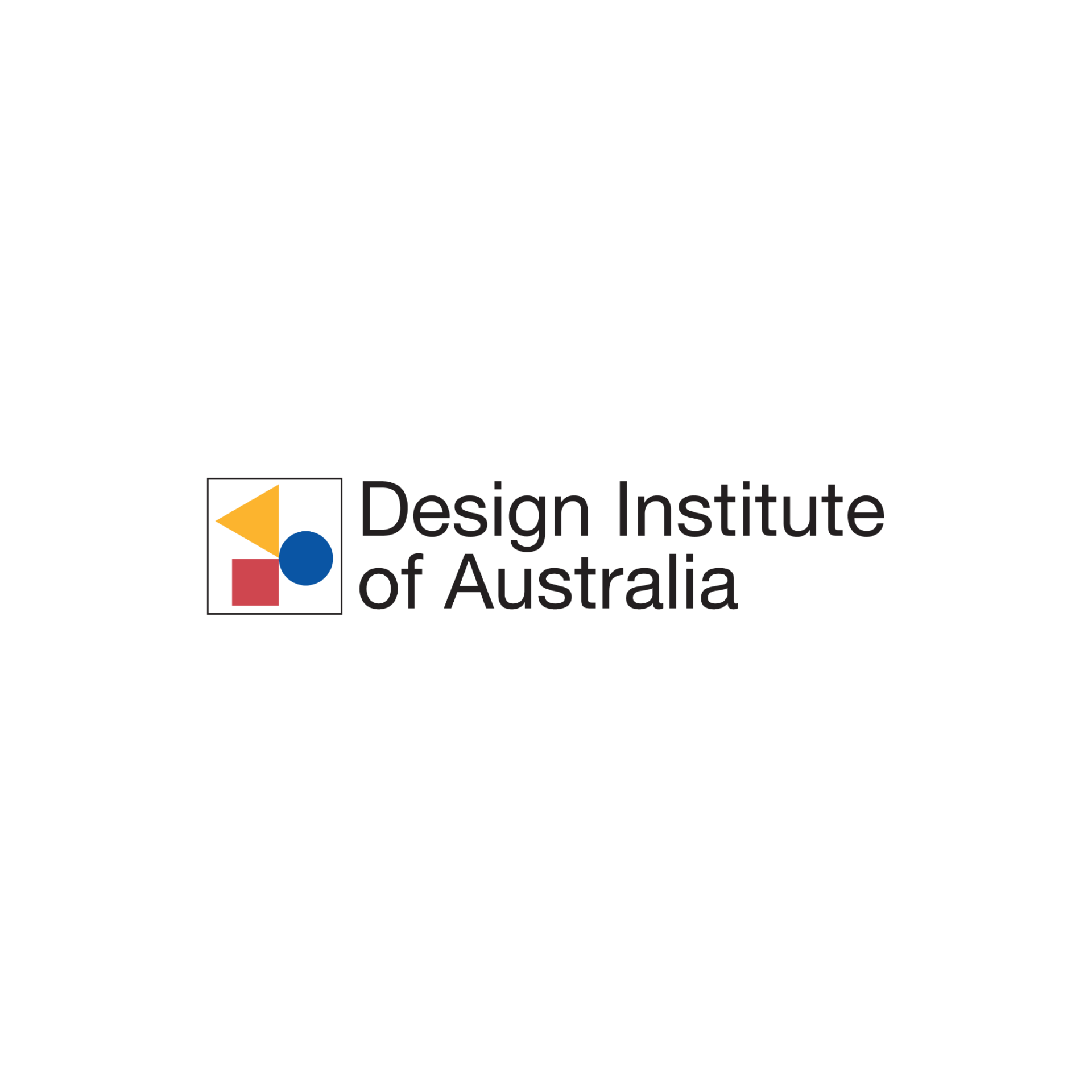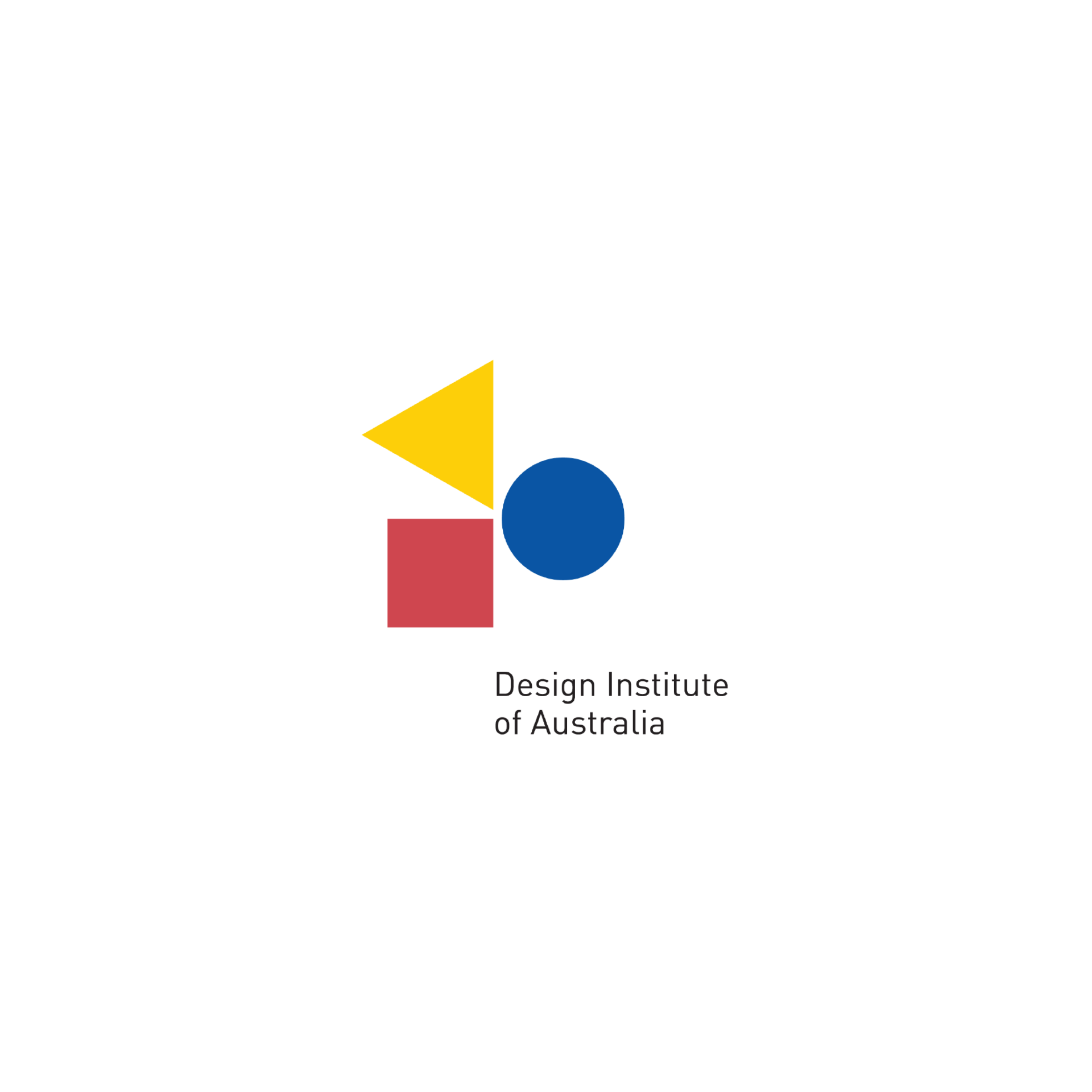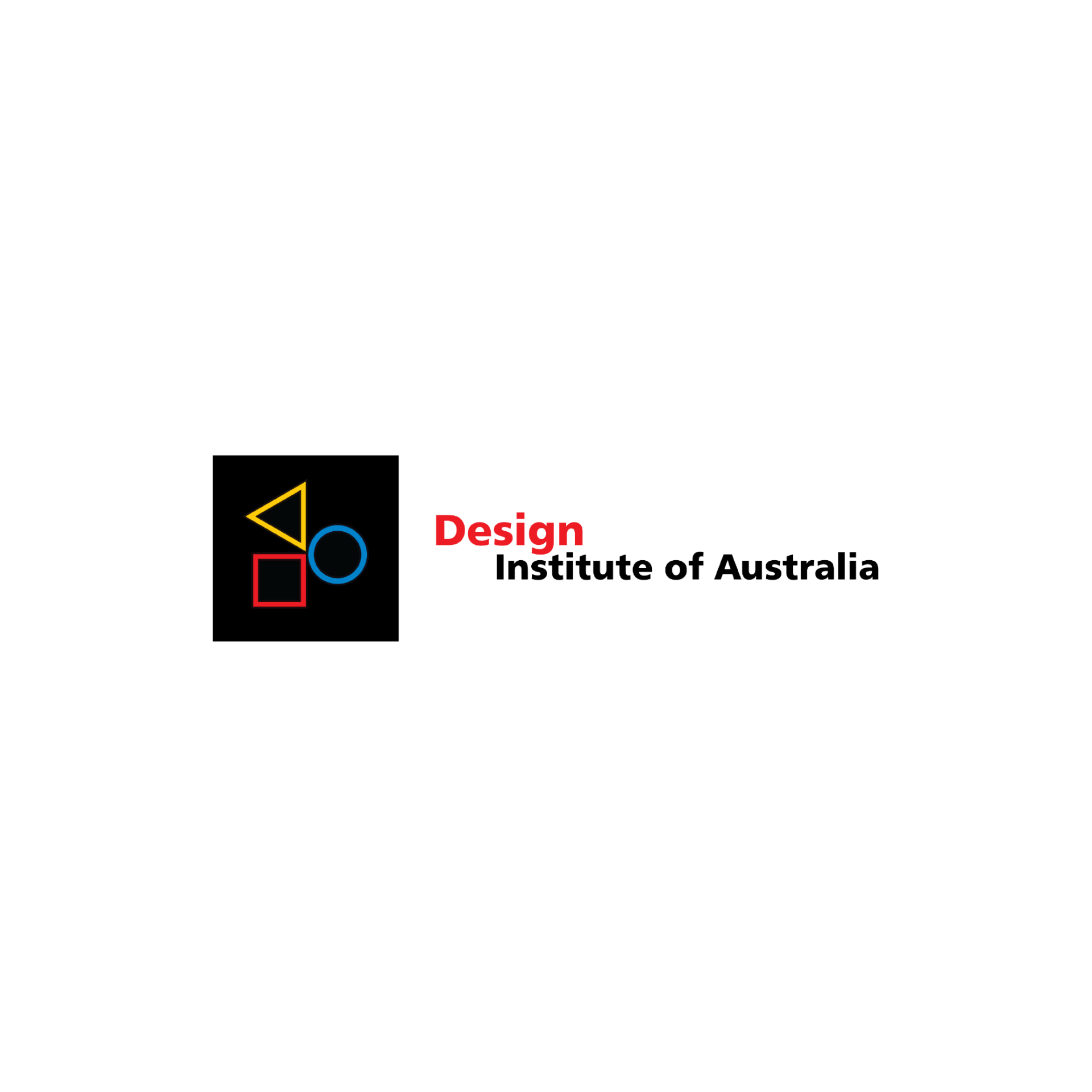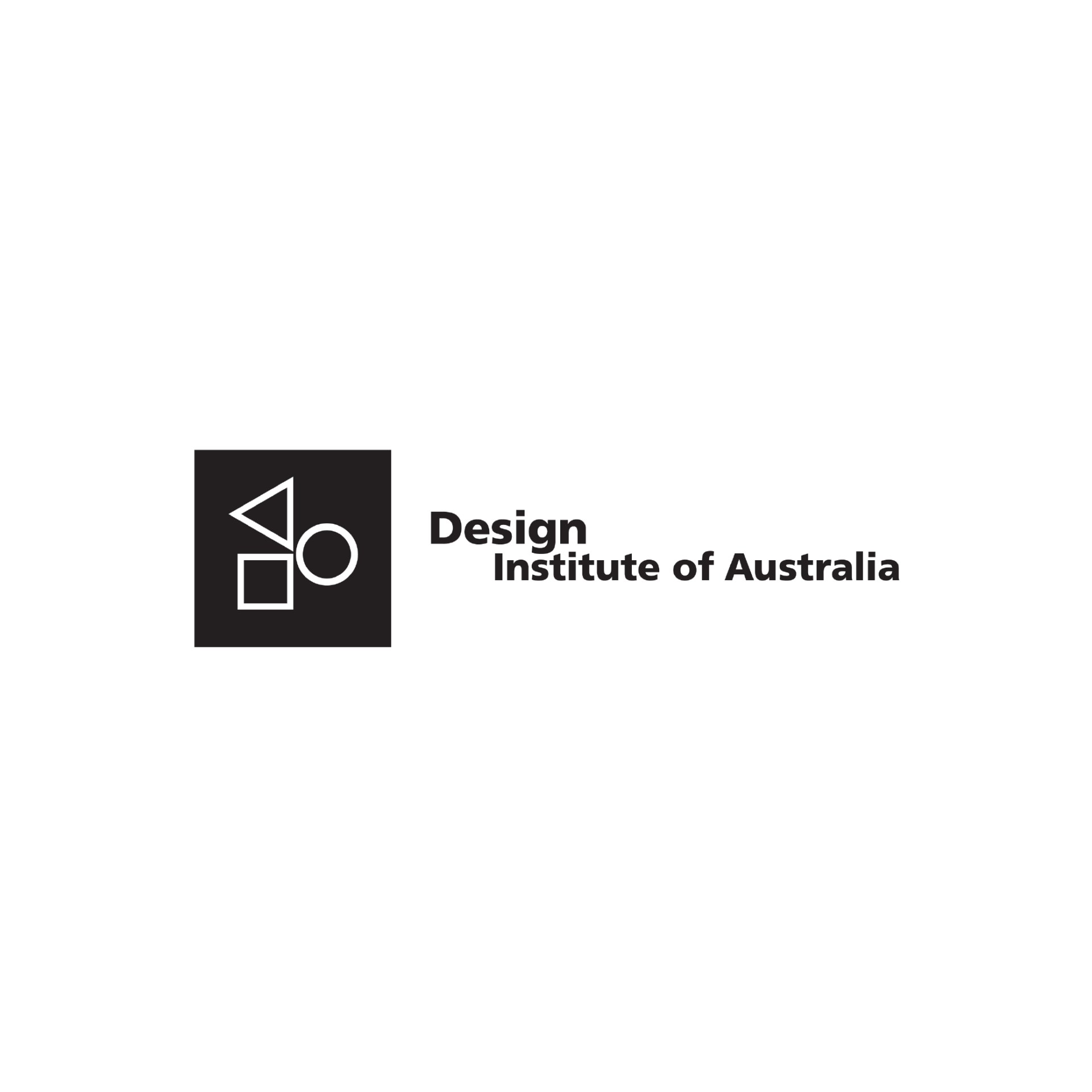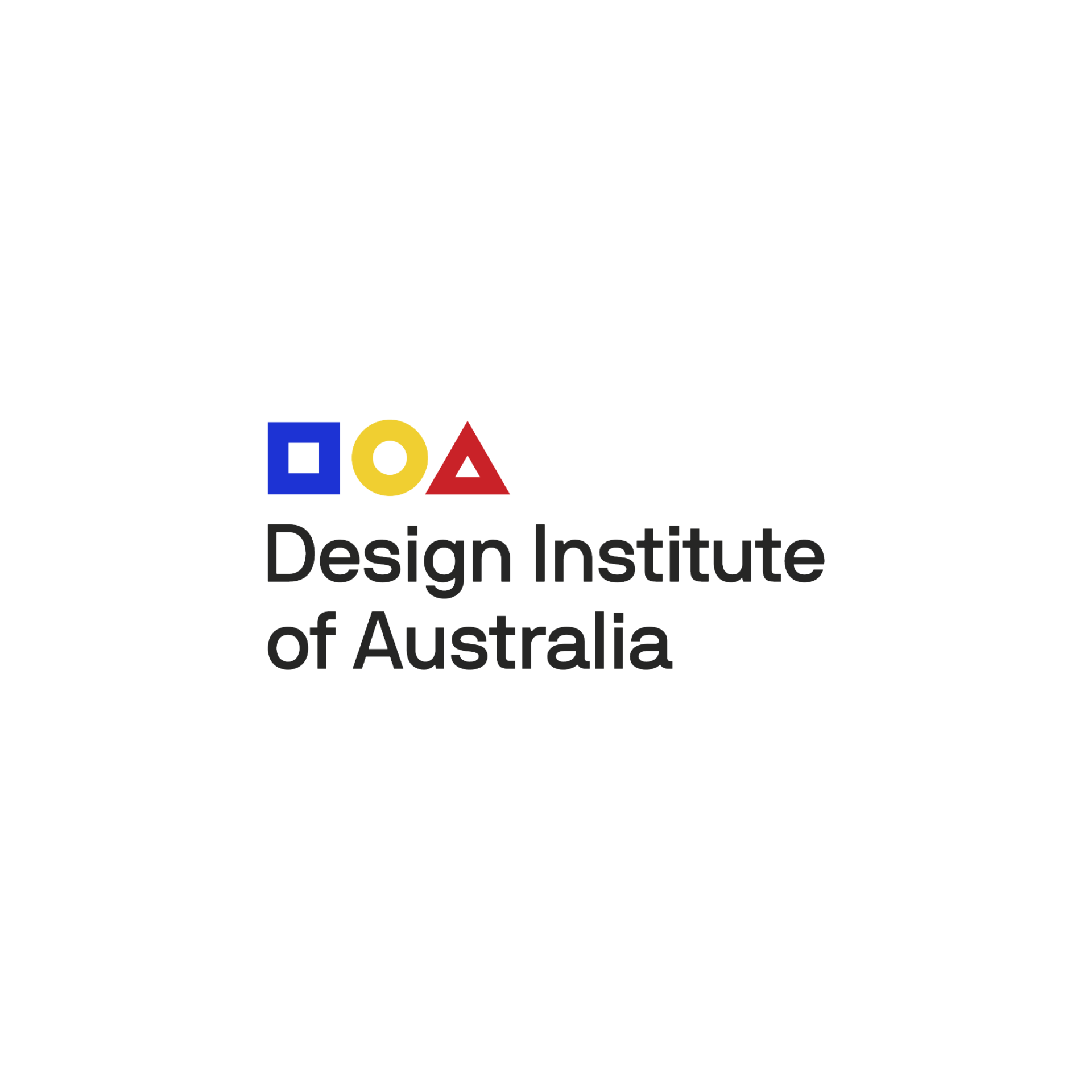Celebrating DIA's 60-year logo legacy
An evolution of a graphic identity
• The new Design Institute of Australia brand marque
For the Design Institute of Australia, design historically has been a continually evolving subject, which it explores through its people, collaborations, programmes, archives, learning activities, and identity. In 2021, we marked 60 years since our first logo was designed. We also welcomed our new logo and integrated brand.
Graphic Design, one of the DIA membership disciplines, is the directing of communication through visuals, usually a combination of typography and illustration. Dating back to prehistoric times, the making and coding of meaning in the absence of the written word was seen through symbols and cave drawings depicting stories. Promoting the provocative power that comes with communication design, the DIA has, over the years, facilitated its own identity to represent its intersecting and multi-disciplinary thinking as seen through designers, its partnerships and community. Increasingly today, the DIA’s logo has been used as an authoritative tool in design, business and education. Many professional designers, design practices, and design-related organisations use the DIA logo as an endorsement. Use of the DIA logo, and associated wording, is allowed subject to conditions, which vary according to membership status and relationship with the institute.
As Australia’s peak body representing design and designers, the DIA is a crucial member and participant in Australasian and International bodies devoted to the design community’s recognition, success, and growth. Its logo is the first to represent Australian designers amongst luminary organisations, including the International Federation of Interior Architects/Designers (IFI), ICSID/World Design Organisation (WDO), and the International Council of Design (ico-D).
The institute, initially known as the Design Industries Association of Australia, dates back to 1939, and the then Society of Designers for Industry, in circa 1947. A decade later in 1958, the Industrial Design Institute of Australia in Melbourne was incorporated. Led by President Ron Rosenfeldt, the first DIA logo was designed in 1961 by Alistair Morrison, considered one of Australia’s most accomplished typographers. The radial placement of the three shapes (square, circle and triangle) at a central point has remained constant over the years up until 2021. Initially encased within a black square outline, Morrison used the three primary colours and Helvetica font.
Morrison’s graphic designs incorporated sophisticated early use of abstraction, for example, in the designs for the covers of the ‘Contemporary Art Society’ exhibition catalogues of 1944 and 1945. In the late 1930s, he worked and exhibited in London and was employed with fellow Australian designer Dhal Collings in 1936 by the Bauhaus teacher Laszlo Moholy Nagy to work on the then new Simpson Piccadilly department store project.1
In the early 1950s, he was commissioned to design a business card and furniture label for the abstract Australian sculptor, Robert Klippel. In 1981, Morrison created the layout and typography for the ‘Ampira Festival—Artists for Aboriginal Land Rights’ poster of 1981, a project co-ordinated by his brother Guy Morrison, the journalist and playwright.1 Several logo iterations have followed since the first. Designer Cal Swann was commissioned to revise the logo in 1993. A former Head of Graphic Design at London’s Saint Martin’s School of Art, he was later Head of Design at Curtin University and the University of South Australia. He reviewed the original shapes, colour values, font type, removed the outline, and also created the first black and white version.
Icarus Design’s Bill Giamos revised the logo in 2001 by adding a black background, thin outline shapes and a new font style. An Adelaide based multi-disciplinary design studio, the firm is inspired by Icarus in Greek mythology. A reminder that communication design work is about people: their physical and psychological needs. From the same firm, changes took place in 2004 by David Robertson and in 2012 by Travis Crawford. He created the logo we have all come to know—a black and white version with significant bolder line weights and logo shapes. From 2018 to 2021, DIA’s Board and National Advisory Council, consisting of state Chairs, has been instrumental in driving the latest identity transformation. Steered by the DIA’s former President Claire Beale and me, the Melbourne design team, Latitude was commissioned to reconsider the famous logo and create an identity that recognises the many facets of the organisation.
Led by Latitude’s Filip Bjazevic, Creative Director, Daniel Dalla Riva, Design Director and working with DIA national office team led by CEO Jo-Ann Kellock, a brand identity emerged that would be agile, and that would strengthen the DIA.
• An evolution of the 60 years old of graphic identity
In celebrating 60 years of graphic identity, we see a re-born contemporary logo that pays tribute to its historical roots and legacy. It represents a new generation of designers and an egalitarian approach towards inclusivity, ethics and responsibility. A logo that is considered as part of the larger brand. Latitude has responded with a flattened new three-colour hollowed-out approach signifying and embracing the cross-pollination between our many designers and their design processes. Alongside our reimagined, refined brand and further emphasising how communication design has changed since the 1960s, the DIA announced its inaugural Designers Australia Awards, incorporating a first step towards the revised logo and demonstrating its versatility in application. Just as importantly, the Awards program is underpinned by the emerging DIA brand philosophy and an agile approach to programming, which reflects in the winners of the Awards, who all echoed DIA’s stated values and beliefs.
The latest identity of the DIA, designed by Latitude , represents an era of new thoughts, directions, and ideas on enhanced ways of doing—ultimately showcasing the potency of design, its continuous gift, and its timeless ability to form and communicate.
Gavin Campbell
National President, Design Institute of Australia



